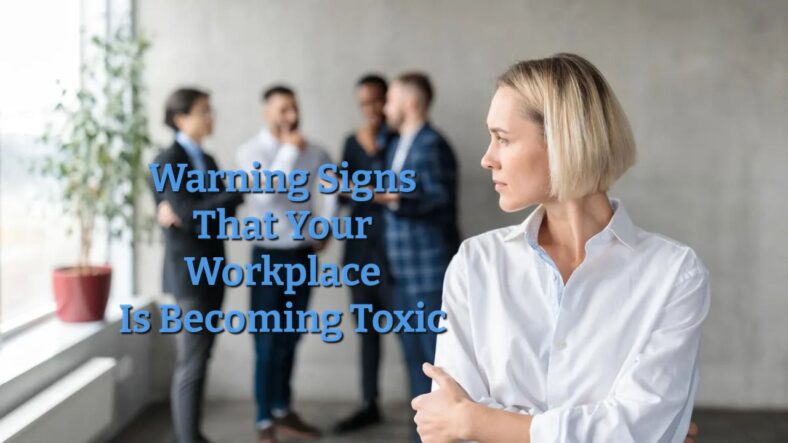A toxic workplace can have a detrimental effect on employees’ well-being, job satisfaction, and overall productivity. It is crucial to recognize the warning signs that indicate your workplace is becoming toxic, allowing you to take appropriate steps to address the issues. Here are some common warning signs to watch out for:
High Employee Turnover

One of the most noticeable indicators of a toxic workplace is a high employee turnover rate. When employees constantly leave the organization, it suggests that something is amiss. Dissatisfied employees may seek opportunities elsewhere, preferring to escape the toxic environment rather than trying to fix it. To keep track of your current perks and overall salary information, check out this paystub generator and assess whether it’s worth staying with the company you work for.
Lack of Trust and Communication
Trust and open communication are the cornerstones of a healthy work environment. However, when these elements begin to erode, it is a clear sign of toxicity. Employees may hesitate to share their ideas or concerns due to fear of retribution or dismissal. This lack of trust and communication can lead to misunderstandings, conflicts, and a decline in teamwork.
Micromanagement and Lack of Autonomy

Excessive micromanagement is a red flag for a toxic workplace. When managers fail to trust their employees and constantly scrutinize their every move, it creates a stifling environment. Employees feel stripped of autonomy and are unable to make decisions or take ownership of their work. This micromanagement not only hampers creativity and innovation but also fosters resentment among team members.
Persistent Negativity and Lack of Support
A toxic workplace is often characterized by a pervasive atmosphere of negativity. Constant complaining, gossiping, and backstabbing can poison the work environment and demoralize employees. Additionally, the absence of support from supervisors and colleagues when it is most needed can lead to feelings of isolation and a lack of motivation.
Unrealistic Workload and Burnout
An overwhelming workload is a significant contributor to workplace toxicity. When employees are consistently expected to work long hours, meet unrealistic deadlines, and juggle multiple responsibilities without sufficient resources, it leads to burnout. Burnout not only affects individuals’ physical and mental health but also hampers their overall performance and engagement.
Lack of Recognition and Growth Opportunities

Employees thrive in environments where their contributions are acknowledged, and they have opportunities for growth. However, a toxic workplace often neglects recognition and fails to provide clear paths for advancement. When employees feel undervalued and see no prospects for professional development, their morale and motivation suffer, leading to decreased job satisfaction.
Bullying and Harassment
Bullying and harassment in any form should never be tolerated in the workplace. These toxic behaviors can cause immense psychological distress, affecting an individual’s well-being and job performance. Signs of bullying and harassment may include verbal abuse, constant criticism, exclusion from team activities, or offensive jokes. Such behavior creates a hostile work environment and must be addressed promptly.
Recognizing these warning signs is the first step toward addressing toxicity in the workplace. It is essential to foster open communication channels, establish clear expectations, and encourage a supportive culture. If you observe these signs, consider discussing your concerns with a trusted colleague or seeking guidance from human resources to address the issues and work towards a healthier work environment. Remember, a positive and nurturing workplace is vital for employee well-being and overall organizational success.

